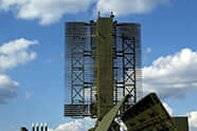Introduction
This brief looks at the storage options available on IP surveillance devices – both content-capture (IP surveillance cameras) and content-recording (NVRs, Hybrid DVRs, PCs, appliance servers). With the integration of surveillance into an organisation’s IP infrastructure, the available storage options can leave users confused about which one to exercise.
Storage on content-capture devices
The increasing acceptance of, and demand for, IP surveillance cameras, has seen a rise in the use of smart surveillance cameras. These cameras typically have logic that allows them to make sense of the mountain of (video) data captured, at the front-end itself. This logic may be in the guise of a processing unit, integrated in the camera’s circuitry; or, as is more often the case, an add-on board that can be optionally fitted to the camera. The processing unit or the add-on board possesses signal processing capabilities to allow it to interpret the visuals captured by the camera lens.
The smart surveillance camera comes configured with on-board storage, for storing and analyzing the captured content, before forwarding it to the content-recording device: non-intelligent content-capture devices stream the captured content straight to the content-recording devices. The on-board storage is usually in the form of an internal microSD cards, and the capacity can range from a couple of GB to 64 GB.
The benefits of an internal storage feature is that
- It allows the IP surveillance camera to carry out video analytics at the point of capture of the content, thereby delivering near-real-time analysis of surveillance footage. This allows surveillance personnel to react much faster to a potential breach of security.
- In situations where the video analytics capability is not required, it allows the IP surveillance camera to function both as a content-capture device and a content-recording device, albeit for a limited period of time (8 hours). This allows such cameras to be deployed as light-weight surveillance systems in areas where space is at a premium or where budget is a constraint. To take an example, surveillance cameras with on-board storage can be fitted on public transport vehicles, to capture and record commuter-related events. At the end of each shift (say 8 – 10 hours), the recorded content is transferred to a traditional content-recording device, and the camera is ready to record during the next shift. The recordings can be stored and accessed for forensic and evidentiary purposes.
Storage on content-recording devices
Content-recording surveillance devices, such as NVRs, Hybrid DVRs, PCs, and appliance servers, typically come configured with one or more internal Hard Disk Drives (HDDs). The capacity of these drives range from 500 GB to over 1 TB. Howsoever much the on-board data storage capacity, there comes a time when this capacity is exhausted; and a user is forced to explore options for add-on external storage.
The external storage drives can either be HDD or SSD. HDD technology is cost-effective and proven, while SSD technology is evolving. The advantages of SSD are performance and power-consumption: key parameters for large data centres, but not quite as relevant for surveillance requirements.
The external storage options can be on any of the following interfaces:
eSATA
External SATA (eSATA) is the external standard for the SATA specification typically used for internal HDDs in PCs. eSATA specifies a bandwidth of up to 3 Gbps (approximately a maximum data transfer rate of 300 MB/sec.) and a maximum device distance of 2 metres (from the external port). There is a 6 Gbps eSATA standard coming out shortly.
eSATA drives are available at reasonable points and offer the best price/performance ratio among external storage interfaces, since the protocol overhead is close to zero. However, the standard has the disadvantages of not allowing daisy-chaining of drives, and requiring a separate power connector for the device.
FireWire
FireWire (also called IEEE 1394) is a high-bandwidth standard for PCs and consumer devices (digicams, A/V equipment, etc.). Originally developed by Apple Inc., it is available in two configurations: IEEE 1394a or FireWire 400, with a peak transfer rate of 400 Mbps; and 1394b or FireWire 800, with a peak transfer rate of 800 Mbps. The upcoming FireWire S1600 and S3200 specifications will deliver 1.6 Gbps and 3.2 Gbps, respectively.
FireWire drives are expensive, mainly on account of the limited number of vendors offering such drives. The FireWire protocol imposes a performance overhead of anywhere between 10 – 20%; and, therefore, a FireWire drive does not offer the same level of performance as an eSATA drive. However, external FireWire devices can be as far as 4.5 metres from the point of connection, in a tree-chain topology; meaning that multiple devices can be connected to a single port.
Ethernet
Network Attached Storage (NAS) offers external storage capacity over Ethernet connections: either Fast Ethernet, at 100 Mbps, or Gigabit Ethernet, at 1 Gbps. The NAS can be seen as a dedicated file server, sitting on the network, and optimized for storing and delivering data to other devices on the network. There are several NAS vendors in the market, offering devices at various levels of performance and different feature-sets.
The advantages of a NAS device is that it utilizes existing IP infrastructure, to deliver the external storage facility; and, it can deliver an enormous volume of external storage. The disadvantage of a NAS device is that if the IP infrastructure is bandwidth-constrained, the NAS device is going to place an even heavier load on the network (and performance is likely to be affected). Furthermore, NAS devices are expensive and require knowledgeable administrators.
USB
USB is the ubiquitous external-device standard in the market. It has been mainly popular with low-bandwidth peripherals such as personal printers, scanners, input devices, and memory sticks. The USB 2.0 standard delivers a peak throughput of 480 Mbps, while the upcoming SuperSpeed USB 3.0 specification promises a bandwidth of 5.0 Gbps.
USB devices are available at extremely attractive price-points, do not require a separate power connection, and can be connected in a hub (star topology). However, given that the USB protocol imposes an overhead of around 15%, the performance of these devices significantly lags that of devices based on eSATA and FireWire 800. The performance issue may be addressed, once USB 3.0 devices start making their way into the market.
Archival Storage
The storage options on the content-capture and content-recording devices are pertinent to data that has just been recorded or data that needs to be stored on-line. Once the data has lost its topicality – this duration varies from organization to organization, and can be anything between 7 days to 90 days – it needs to be moved to a near-line storage medium and subsequently to an off-line storage medium. A tiered storage policy needs to be followed, to ensure that valuable surveillance data is retained in the system, for potential forensic use at a future date, even after the data has lost its immediacy.
Storage options on the Mistral Smartvue IP Surveillance solution
The Mistral Smartvue IP surveillance camera supports an internal microSD card slot, which can host a 16 GB microSD card as an option. The storage card option allows the camera to be used as a front-end video analytics device; as well as a stand-alone capture-and-record surveillance device, in situations demanding a low-cost, compact surveillance set-up.
The Mistral Smartvue NVR comes with a 1 TB internal storage HDD. External storage options on the NVR are an eSATA port, to connect to eSATA storage devices; and a Gigabit Ethernet port, to connect to a NAS.



